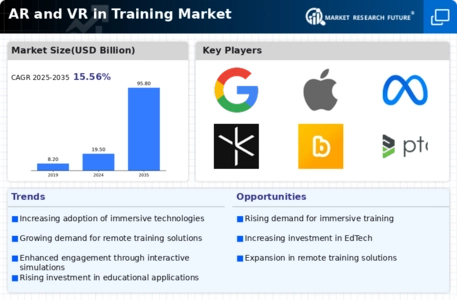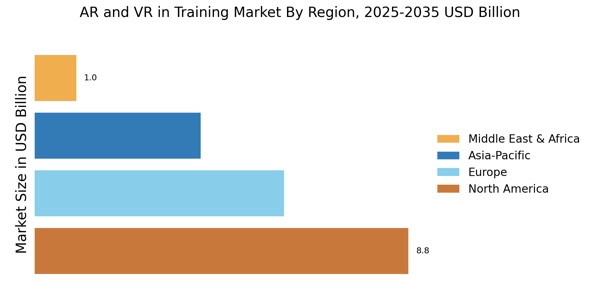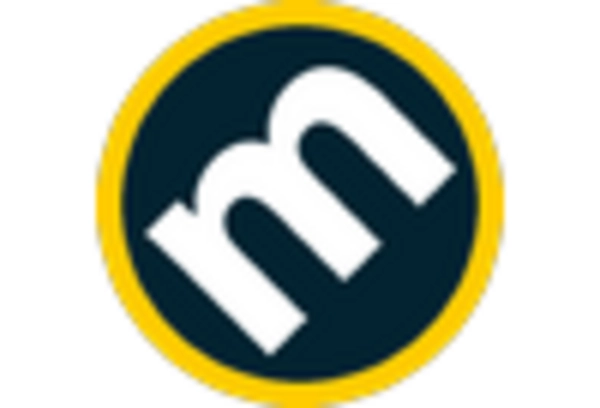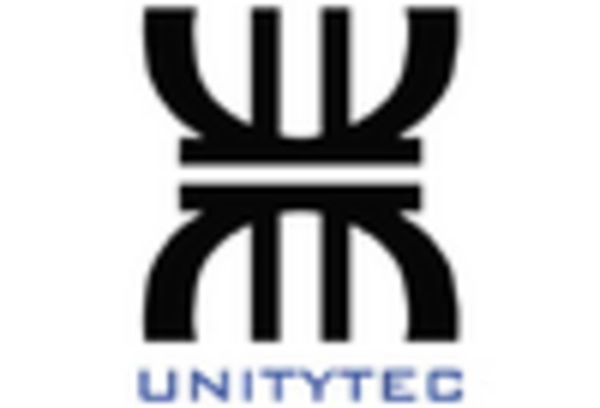Enhanced Engagement and Retention
The AR and VR in Training Market is witnessing a surge in demand due to the enhanced engagement and retention rates associated with immersive learning experiences. Studies indicate that learners are more likely to retain information when it is presented in an interactive format. This trend is particularly evident in sectors such as healthcare and aviation, where training programs utilizing AR and VR technologies have shown up to a 75% increase in knowledge retention compared to traditional methods. As organizations seek to improve training outcomes, the integration of AR and VR technologies is becoming a strategic priority, thereby driving growth in the AR and VR in Training Market.
Technological Advancements in AR and VR
The rapid technological advancements in AR and VR are a key driver for the AR and VR in Training Market. Innovations in hardware, such as more affordable headsets and improved graphics, alongside software developments, are making these technologies more accessible to a wider range of industries. For example, the introduction of 5G technology is expected to enhance the performance of AR and VR applications, allowing for real-time interactions and more complex simulations. As these technologies evolve, they are likely to attract more organizations to invest in AR and VR training solutions, thereby expanding the AR and VR in Training Market.
Cost-Effectiveness of Training Solutions
The AR and VR in Training Market is increasingly recognized for its cost-effectiveness in delivering training solutions. By utilizing virtual environments, organizations can significantly reduce expenses related to travel, materials, and instructor fees. For instance, companies that have adopted VR training report a reduction in training costs by approximately 30% to 50%. This financial advantage is particularly appealing to industries with high training demands, such as manufacturing and logistics. As businesses continue to seek ways to optimize their training budgets, the cost-effectiveness of AR and VR solutions is likely to propel further investment in the AR and VR in Training Market.
Focus on Safety and Risk Management Training
The emphasis on safety and risk management training is driving growth in the AR and VR in Training Market. Industries such as construction, manufacturing, and healthcare are increasingly utilizing AR and VR technologies to provide realistic training scenarios that enhance safety awareness. By simulating hazardous situations in a controlled environment, these technologies allow trainees to practice responses without real-world consequences. Reports suggest that organizations implementing AR and VR safety training have experienced a reduction in workplace accidents by up to 40%. This focus on safety training is likely to continue to propel the AR and VR in Training Market as companies prioritize employee well-being.
Growing Demand for Remote Training Solutions
The increasing demand for remote training solutions is significantly influencing the AR and VR in Training Market. As organizations adapt to flexible work environments, the need for effective remote training tools has become paramount. AR and VR technologies offer unique advantages, such as the ability to simulate real-world scenarios without the need for physical presence. This capability is particularly beneficial in sectors like education and corporate training, where remote learning has become essential. The AR and VR in Training Market is likely to see continued growth as more organizations recognize the value of these technologies in facilitating remote training.


















Leave a Comment